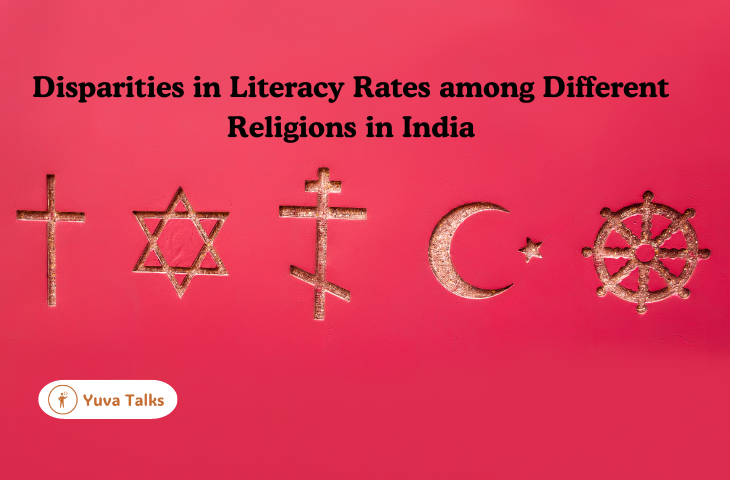Literacy rates in India vary significantly across different social groups, including religious affiliations. This table shows the literacy rates among Hindus, Muslims, Christians, and Sikhs in both rural and urban areas, providing an understanding of how literacy differs by religion and highlighting the disparities within each group.
For each religion, there is a noticeable difference in literacy rates between rural and urban populations. Urban areas generally have higher literacy rates for both men and women across all religious groups compared to rural areas. This disparity is likely due to better access to educational resources and opportunities in urban environments.
Among Hindus, the rural male literacy rate is 81.8%, while the rural female literacy rate is 64.5%. In urban areas, Hindu male literacy rises to 93.4%, and Hindu female literacy increases to 83.8%. Overall, the literacy rates for Hindus are 85.1% for men and 70.0% for women.
For Muslims, the rural male literacy rate is 77.4%, and the rural female literacy rate is 64.8%. In urban areas, Muslim male literacy reaches 85.8%, while Muslim female literacy is 75.6%. The combined literacy rates for Muslims are 80.6% for men and 68.8% for women.
Christians have relatively higher literacy rates compared to other religions. The rural male literacy rate among Christians is 84.4%, and the rural female literacy rate is 77.0%. In urban areas, Christian male literacy is 95.5%, while Christian female literacy is 91.4%. Overall, the literacy rates for Christians are 88.2% for men and 82.2% for women.
Sikhs exhibit the highest literacy rates among the religions listed. The rural male literacy rate for Sikhs is 92.7%, and the rural female literacy rate is 96.4%. In urban areas, Sikh male literacy is 94.2%, and Sikh female literacy is 95.3%. The combined literacy rates for Sikhs are 88.9% for men and 90.1% for women.
Understanding the variations in literacy rates among different religions is crucial for identifying the specific challenges each group encounters. This awareness is vital for formulating and implementing targeted policies aimed at enhancing education and literacy across all religious communities.
Recognizing these differences allows policymakers and educators to address the unique needs of each group, ensuring that no community is left behind in the pursuit of education. By tailoring strategies to improve literacy rates, we can work towards a more equitable and educated society for everyone.
Also Read:- Iran Population
Literacy Rate by Religion
The following table shows literacy rates for different religions in India.
| Social Group | Rural (Male) | Rural (Female) | Urban (Male) | Urban (Female) | Rural + Urban (Male) | Rural + Urban (Female) |
| Hindu | 81.8% | 64.5% | 93.4% | 83.8% | 85.1% | 70.0% |
| Muslim | 77.4% | 64.8% | 85.8% | 75.6% | 80.6% | 68.8% |
| Christian | 84.4% | 77.0% | 95.5% | 91.4% | 88.2% | 82.2% |
| Sikh | 92.7% | 96.4% | 94.2% | 95.3% | 88.9% | 90.1% |
| All | 81.5% | 65.0% | 92.2% | 82.8% | 84.7% | 70.0% |
Conclusion:
Literacy rates in India vary significantly across different religious groups, reflecting the diverse educational challenges each group faces. Urban areas typically have higher literacy rates than rural areas, underscoring the need for better access to education in rural regions.
Sikhs and Christians generally exhibit higher literacy rates compared to Hindus and Muslims. This disparity highlights the necessity of addressing educational inequalities between different religious groups to ensure equal learning opportunities for everyone.
As India endeavors to improve its literacy rates, it is essential to consider the specific needs of each religious community. Tailored educational programs and initiatives can help close the gap and foster greater educational equality.
Ultimately, enhancing literacy rates across all religious groups will lead to better opportunities, increased economic growth, and an improved quality of life for individuals and communities throughout India.


